
Chito-oligosaccharides
So amazing!

So amazing!
Chitin, which is widely found in shrimp and crab shells, is a polysaccharide made by the polymerization of N acetyl glucosamine.
Chito-oligosaccharides (chitosan) were obtained after deacetylation.
In the past ten years, the research on chitin and Chito-oligosaccharides has been widely carried out at home and abroad, and their functions in anti-tumor and prevention and treatment of pathogenic microorganisms have attracted more and more attention. However, due to its insoluble water, it is very limited in the development of applications. To this end, Chito-oligosaccharides are degraded into Chito-oligosaccharides (also known as oligoglucosaccharides, chitosan oligosaccharides, chitosan oligosaccharides) by appropriate methods, that is, oligosaccharides formed by 2~10 aminoglycosaccharides linked by β-1-4 glycosidic bonds.
Through a series of experiments, it has been found that it not only has good water solubility, is easy to be absorbed by the human body, but also has a variety of physiological functions such as antibacterial, anti-tumor, blood lipid regulation, immune regulation and activation of intestinal bifidobacteria, and the application field has been greatly broadened.
Chito-oligosaccharides has a unique application value in fine chemicals, biomedicine, health food, agriculture, forestry and animal husbandry.

Chito-oligosaccharides chemical structure
1, cationic Chito-oligosaccharides easily binds to negatively charged neuraminic acid surfaces of RBCs due to electrostatic interactions
2, erythrocytes lose their biconcave shape upon interaction with Chito-oligosaccharides, resulting in RBC agglutination
3, erythrocytes are held together by Chito-oligosaccharides polymer chains and repolymerized into a robust crystal lattice that traps the cells and forms a stable mechanical seal

Figure 1: SEM images of erythrocyte coagulation on chitosan (A), CS 6c (BJ, CS 12c (C), and CS 1 Bc (D) (reproduced from Ref. #2- Chen et al., 2017)
1, Chito-oligosaccharides Absorption of plasma, resulting in the concentration of red blood cells and platelets at the site of injury.
2, Chito-oligosaccharides leads to adhesion, aggregation, and activation of platelets.
3, Chito-oligosaccharides promote red blood cell coagulation and activation due to charge-based interactions.
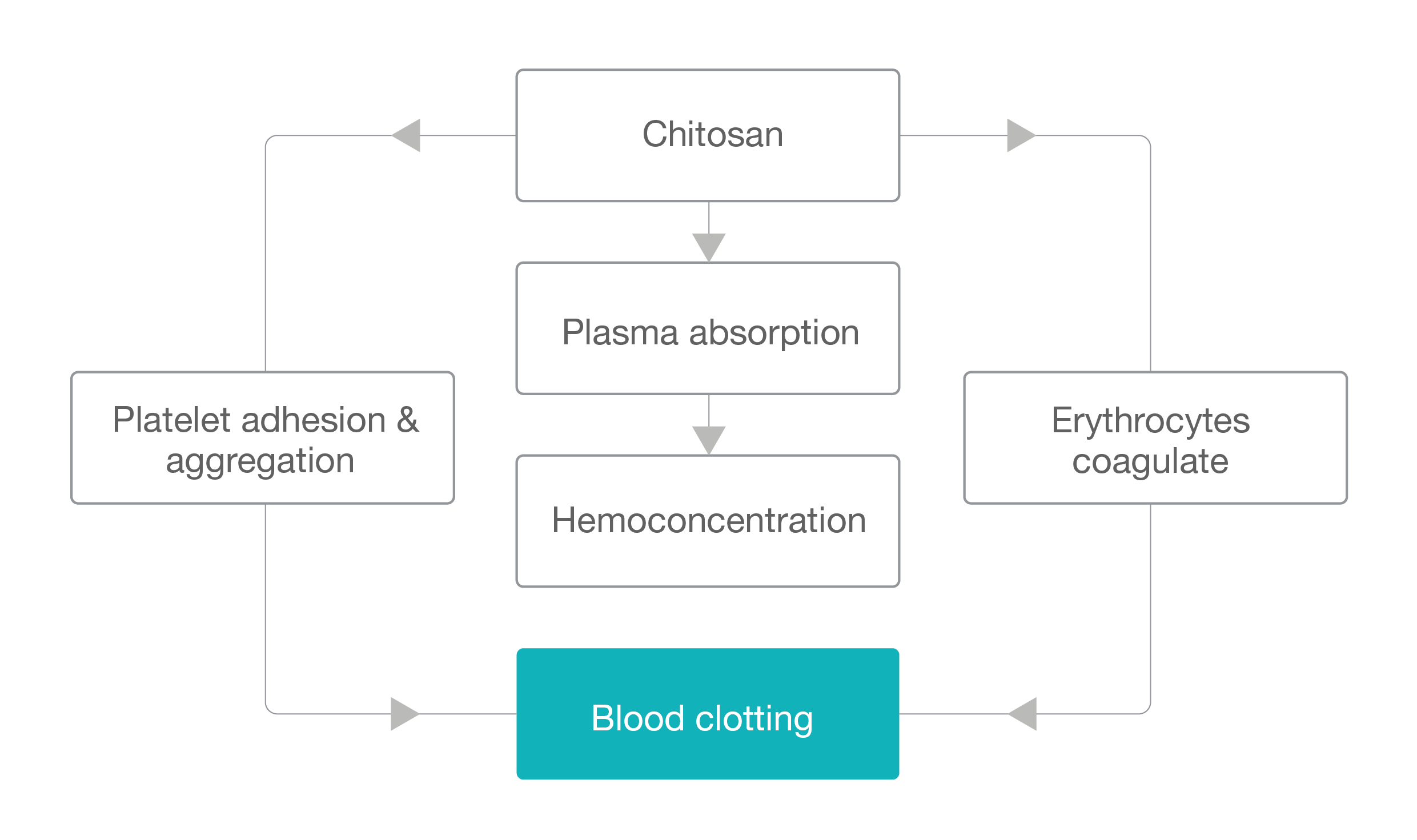
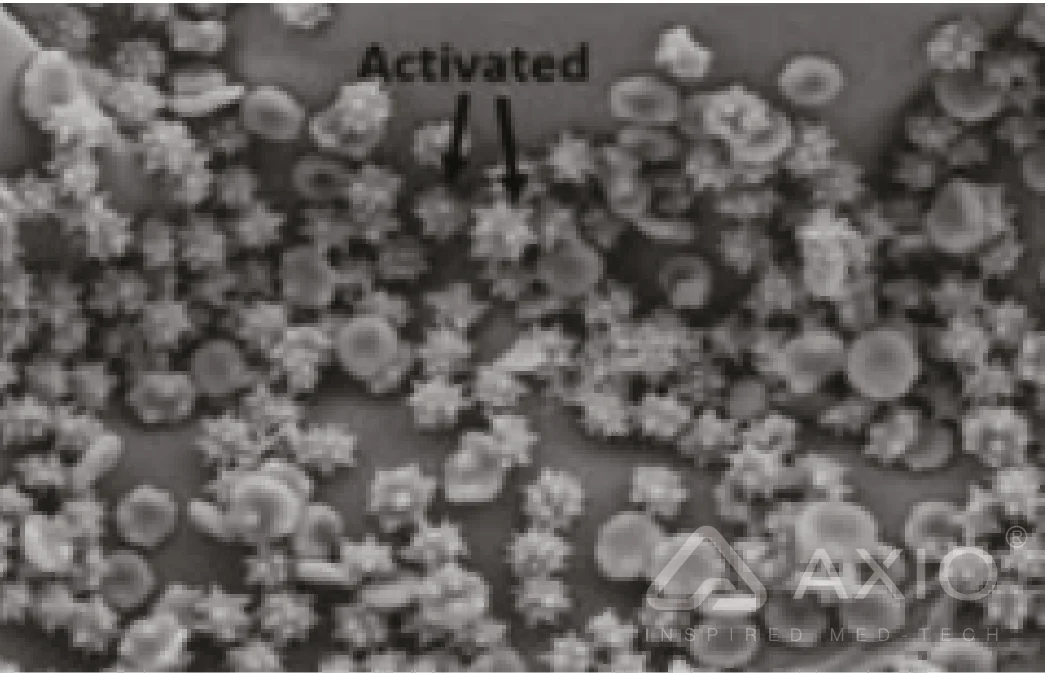
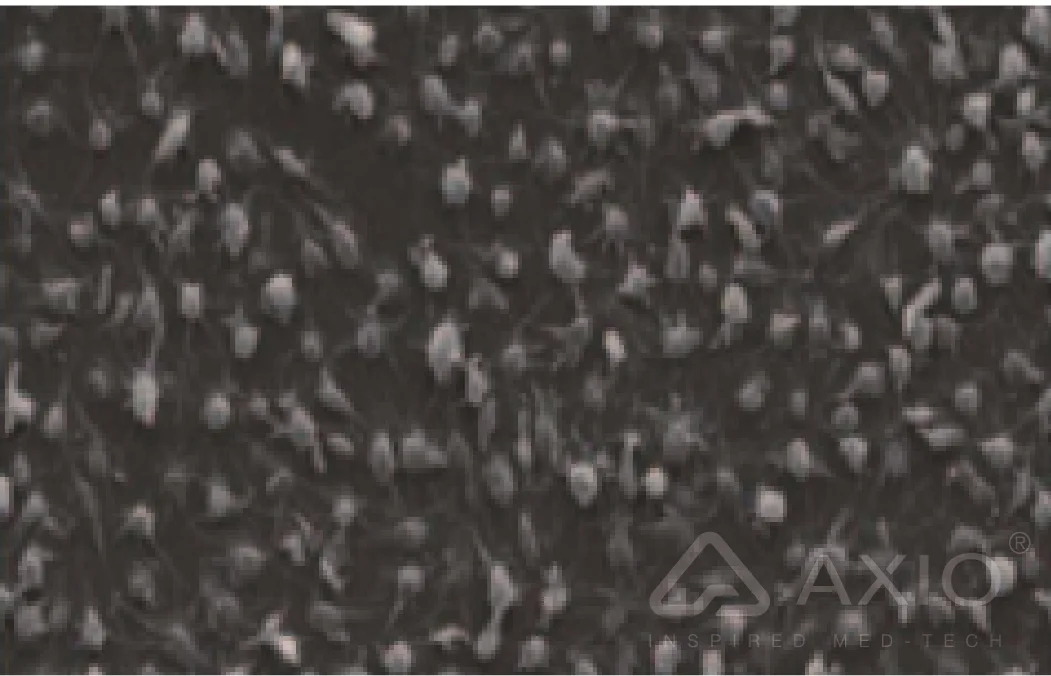
1, Chito-oligosaccharides stimulates the proliferation of dermal fibroblasts and allows fibrous tissue formation.
2, Chito-oligosaccharides interact with serum growth factors and metal ions (e.g., calcium) to induce rapid fibroblast proliferation.
3, Chito-oligosaccharides inhibits the proliferation of keratinocytes.
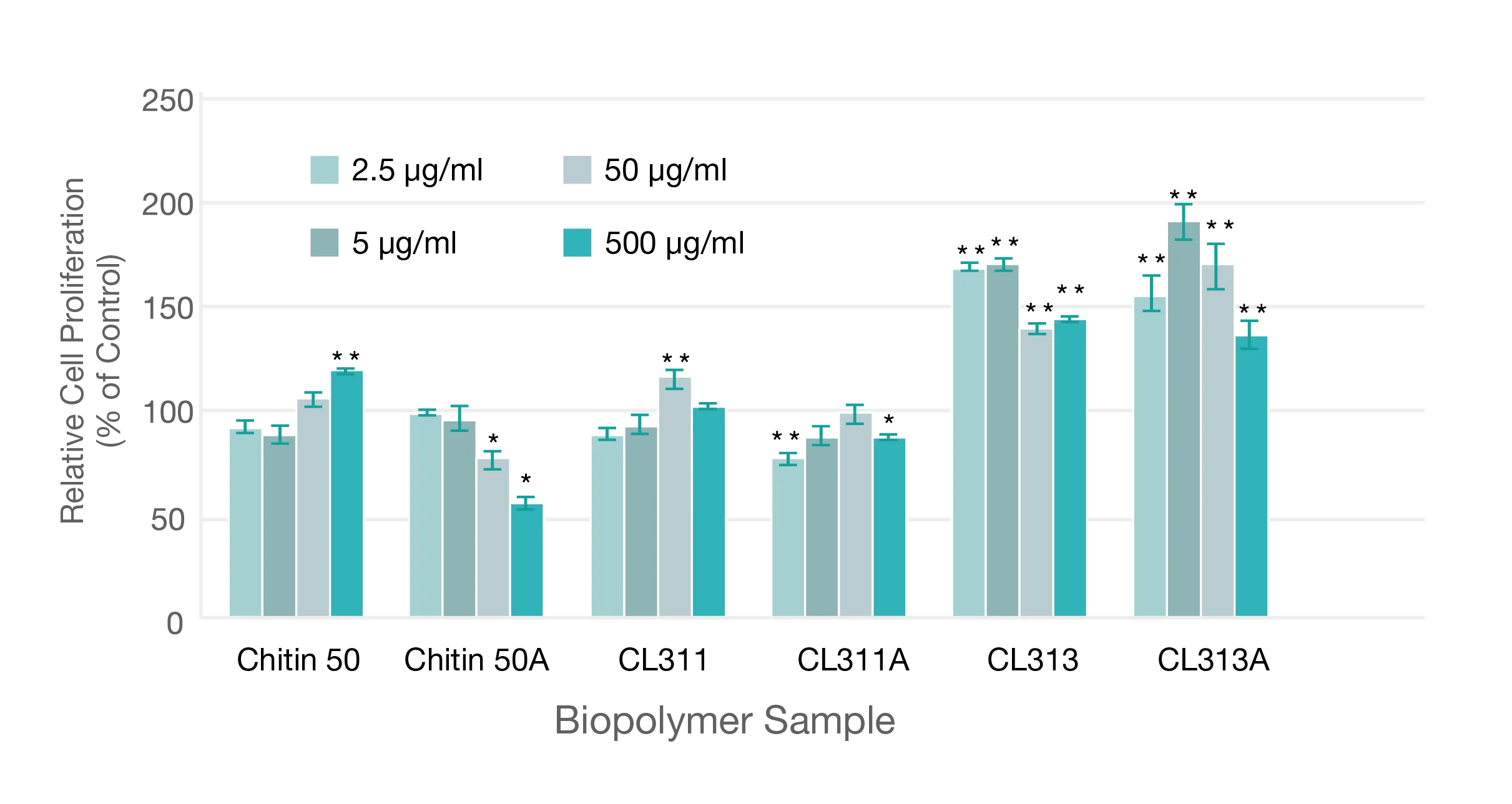
Preliminary screening of chitin/Chito-oligosaccharides samples for their effect on fibroblast proliferation in vitro. Human dermal fibroblasts (C520) were treated with various chitosan samples for 3 days. The 3-H thymidine cell proliferation assay is then performed. Data (n=3 ±SEM) are presented as a percentage of control (no polymer present) (*P (0.05, **P (0.01, ANOVA).
1, cationic Chito-oligosaccharides bind to the negatively charged cell wall of microorganisms, resulting in leakage of proteins and other intracellular components
2, Chito-oligosaccharides inhibit mRNA and protein synthesis by infiltrating Chito-oligosaccharides into the nucleus of microorganisms.
3, Chito-oligosaccharides causes cell penetration of microorganisms.
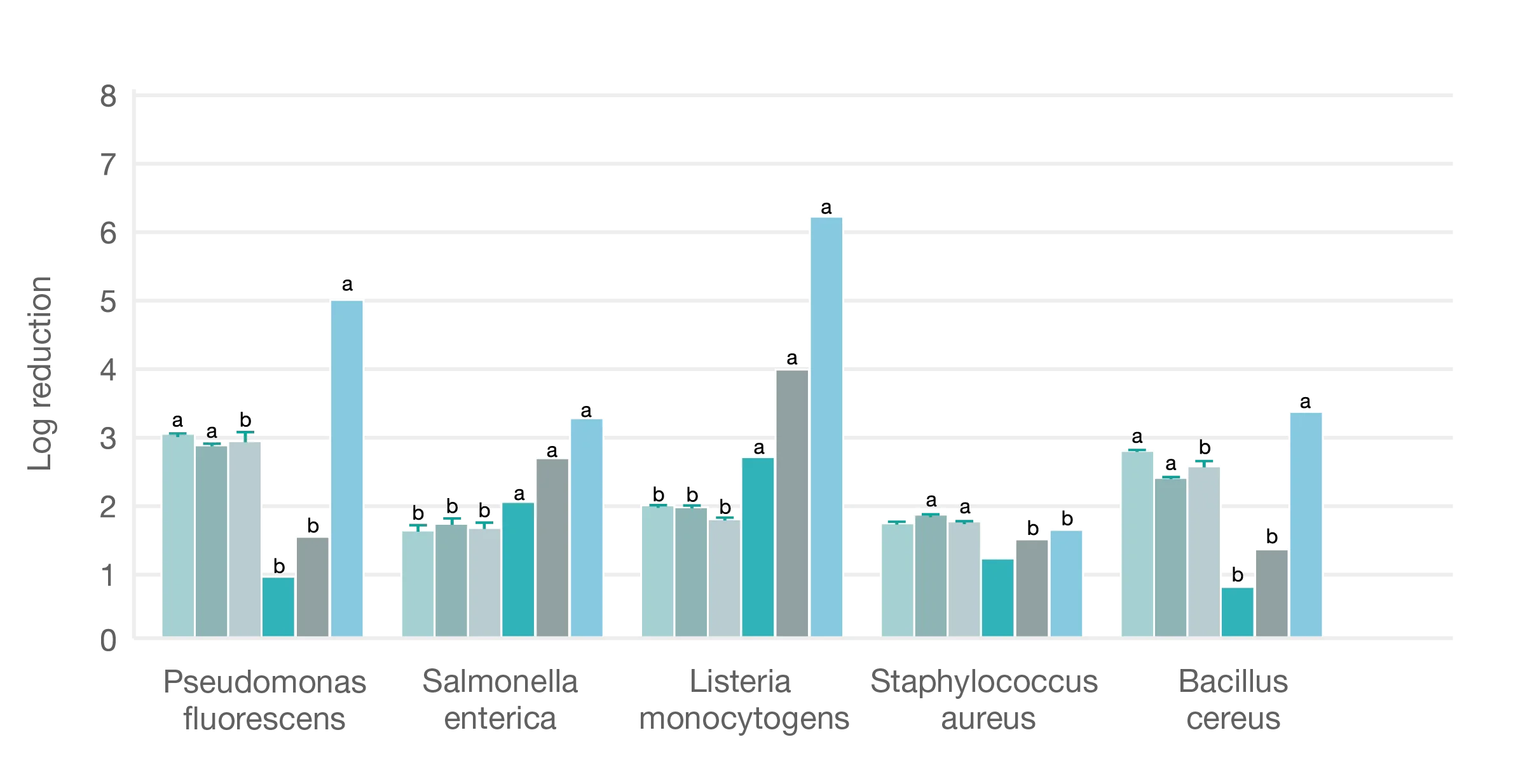
After 60 minutes of exposure to 0.01% (■), 0.1% (■), and 1% (■) chitosan, the logarithm of suspension (■) and biofilm (■) cells of the five bacterial strains decreased. Statistical comparisons of plankton and biofilm log reductions exposed to the same chitosan concentration were performed. Shows significantly different values for different superscript (a>b) letters (p < 0.05) (n = 6). Reprinted from Orgaz B. et al.
1, Chito-oligosaccharides absorb proton ions released from the site of inflammation.
2, chitin, and Chito-oligosaccharides reduce bradykinin production at sites of inflammation.
3, Chito-oligosaccharides also inhibits phospholipase A2. (PLA-2) activity, which in turn blocks the arachidonic acid pathway.
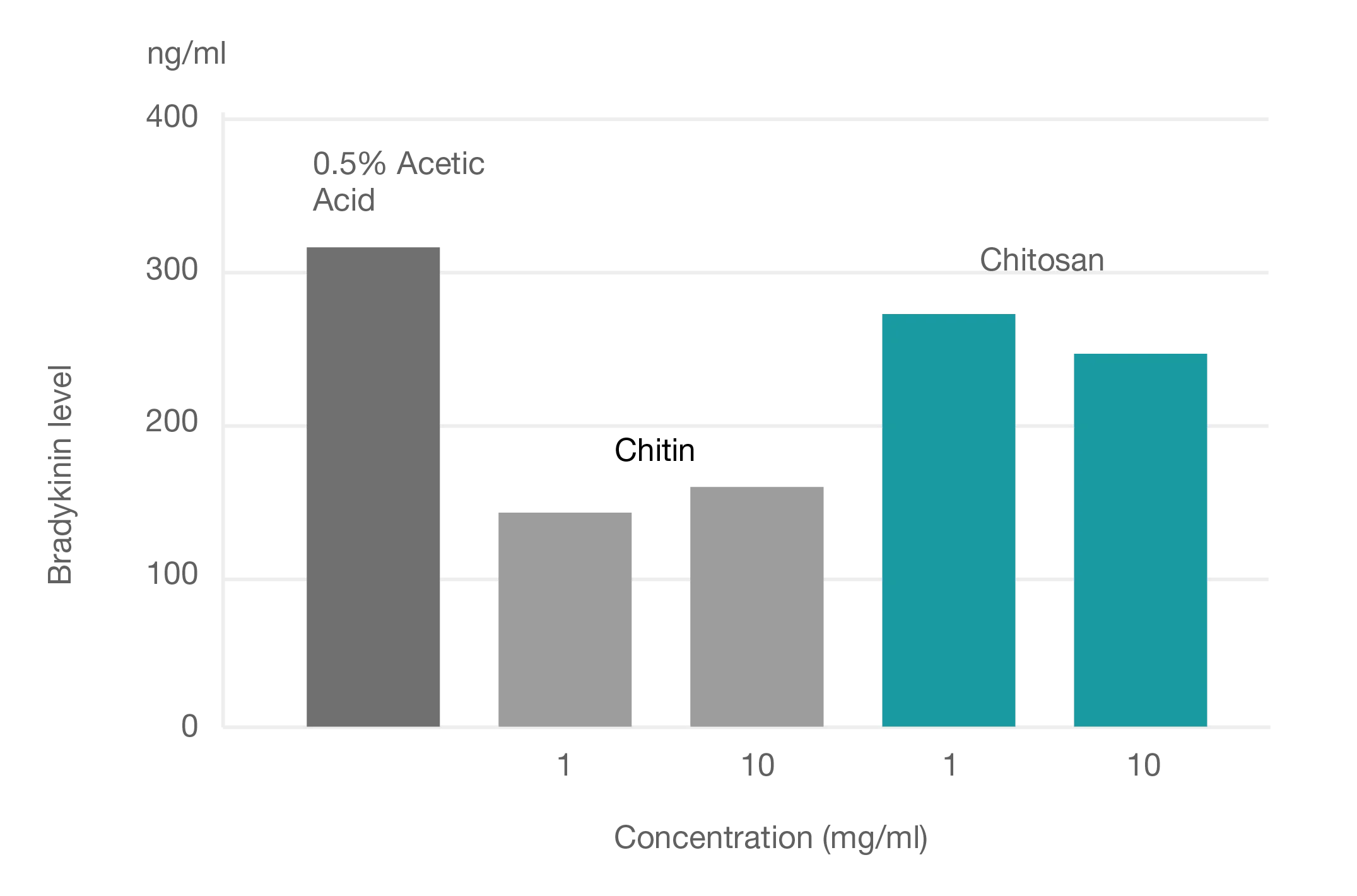
Effect of chitin and Chito-oligosaccharides on bradykinin production. Bradykinin levels were reduced 16-fold in 1% and 10% chitosan/acetic acid solutions. 7% and 22.2% compared to control (0.5% acetic acid), respectively.
The service has a warm connection with the customer